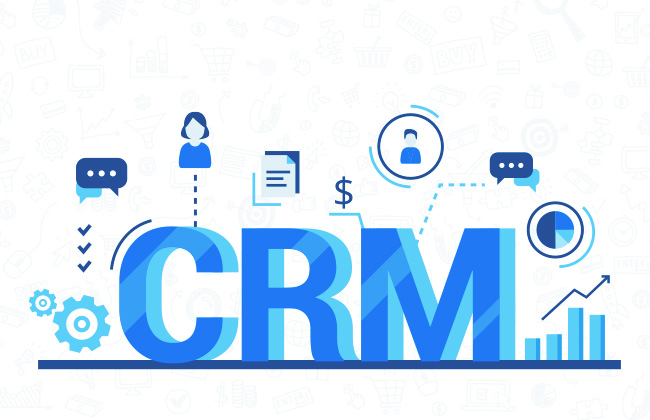Every business has four foundations—customers, resources, processes, and technology. And of these four, customers are perhaps the essential element to ensure a company’s success.
Your relationship with your current, past, and prospective customers build a solid customer base, which leads to more sales, referrals, and overall growth. But building and maintaining a good relationship with your customers isn’t always as easy as it seems.
Implementing effective Customer Relationship Management (CRM) strategies is key to cultivating a successful client-business relationship. By leveraging CRM tools, you can foster a deeper connection with your customers, ensuring their loyalty and commitment over the long term.
What Is a CRM System?
Do you know why customers keep coming back to your business? The answer is simple: excellent customer service and relationship management. Customer Relationship Management, or CRM, is the powerful, invisible driving force that propels B2B and B2C sales and marketing. It involves using a cloud-based computer program to create meaningful customer relationships.
CRM yields incredible results when you utilize it to its full potential. From higher sales figures reaching marketing goals, boosting customer interactions, and a better understanding of customer preferences and choices – this system does it all! A simple CRM software enables assembling data from different sources, to cater customer’s needs, in order to have an outstanding experience and encourage loyalty.
How Do You Improve Your CRM?
Forbes reports that 72% of CEOs aim to boost customer customization and responsiveness. This approach has prompted many firms to see affordable CRM systems as a profitable asset.
1. Create an Omnichannel Presence
No one-size-fits-all approach exists in today’s world of advanced technology and consumer demands. For businesses to capture the attention of their customers, they need to employ many communication channels. It is, therefore, essential to make customer service easily accessible by offering multiple contact points.
Providing personalized care will win over shoppers and ensure their loyalty in return, whether through online chats, phone conversations, or any other means. After all, what customers crave is the ease of being able to access the firm from wherever they may be!
2. Create a Business Identity and Use It Consistently
Develop a business communication strategy that supports long- and short-term goals. Create a company-wide system for dealing with consumer complaints, criticism, and dissatisfaction.
A representative may send a complaint or critical feedback to a department head or supervisor for inquiry and response. Salespeople may also ask the product team whether a client’s modification request is possible.
Businesses need to have communication plans ready for every eventuality.
3. Cooperation Between the Business and Its Clients
Knowing your consumer base and their ever-changing service expectations is essential. Identifying the right market and studying its buyers’ behaviors may provide large profits.
First, gather background, habits, preferences, objectives, and challenges. A simple CRM makes it easy to examine client data to manage relationships effectively.
To put together a profile of your ideal customer, use this information. Using the buyer profile as a guide, you can ensure that your customer service staff meets customers’ needs.
4. Building a Smart Workforce
Any business requires a solid and qualified team to create stronger customer ties. If the staff has had enough training, then they will know how to interact with clients positively.
Knowledgeable workers may significantly contribute to the company’s success in this respect. In addition, the knowledgeable staff can solve the clients’ problems methodically.
5. Boost Your Online Profile and Engagement
Keep your social media outlets updated to reflect your company’s progress. Maintain interest by announcing new items, partnerships, and offers to both audiences.
Improve your interactions with customers and fans by using your social media profiles. Don’t forget to document user feedback, including questions, comments, and feature requests. This will give you a better idea of how your product is received and what features customers find most useful.
6. Make a Plan for the Customer’s Journey
To increase conversions, managers monitor the whole purchasing process. First-rate service at every client encounter is key to excellent CRM. Email marketing, internet advertising, and direct encounters may be planned.
The marketing department routinely reviews the customer journey mapping process. Inquiring, comparing, buying, and setting up are all part of this process. Emotions are a factor at every point in the consumer life cycle.
Throughout the customer journey, it’s essential to plan CRM channels through simple CRM software. These approaches may help you interact with customers and solve their concerns.
For a company to succeed, its customer relationship management strategy must be implemented. Knowing the customer’s journey and the many steps before purchasing are also handy.
7. Brands Connect via Reviews
You demonstrate that you value customer opinions and feedback by soliciting online reviews. Moreover, customers are more likely to rely on the experience of other people who have interacted with your business.
To really drive the point home, it’s important to showcase consumer satisfaction all over your website, social media accounts, and other platforms. Compelling case studies showing how you helped clients overcome challenges make an even stronger statement. Make sure this content is written in an engaging and captivating way!
8. Adapt Your Service to Each Individual Client to the Fullest Extent
Target Marketing found that 48% of customers increase their purchases with tailored e-commerce. Customers’ preferences may be ascertained with the use of CRM. Companies utilize easy-to-use CRM to suit consumer needs, such as sending emails about previously bought things.
Independent of CRM, monitor client touch points across channels and identify browsing behaviors.
9. Apply CRM Integration
Your company’s customer-facing software must be compatible with your chosen relationship management system. CRMs are communication databases. Thus, they should be part of every customer encounter (email, calendar, marketing campaign).
- By use of a phone conversation
- Via written communication, such as a letter or electronic message
- The World Wide Web, Mobile Devices, etc.
One advantage of integrated CRMs is that customer-facing staff may access relevant client data through any contact method (phone, email, in-person meeting, etc.). Your personnel will be more empathetic to customers. If done effectively, a simple CRM tool may allow AI-powered lead scoring.
Incompatible systems reduce productivity and create data and process silos. A company should never see CRM as a sales-only tool.
10. Make Advantage of User-Generated Content
Make it simple for site visitors to provide material by allowing blogs, hashtagged photos, and favorited articles. Facilitate feedback and sharing. Improve your search engine optimization and see a rise in conversions.
Solicit comments and contributions from your audience to promote user-generated material. It could be through videos, images, or product enhancement recommendations. It will encourage brand passion and involvement.
Forums are an effective method of fostering more user-generated content. They are lovely for communicating with consumers, understanding their requirements, and resolving difficulties. Whether you offer physical or digital products, forums are helpful.
Conclusion
Managing customer relationships doesn’t have to be a chore; investing in a practical, user-friendly CRM system is the key. You can help your team make the most of their customer-focused efforts with an intuitive interface and easy-to-follow features.
Whether you are an experienced customer service professional or just getting started in customer relationship management, a reliable CRM will ensure you don’t miss any opportunities to exceed customer expectations. Get ready to appeal to your customers with a streamlined approach.








